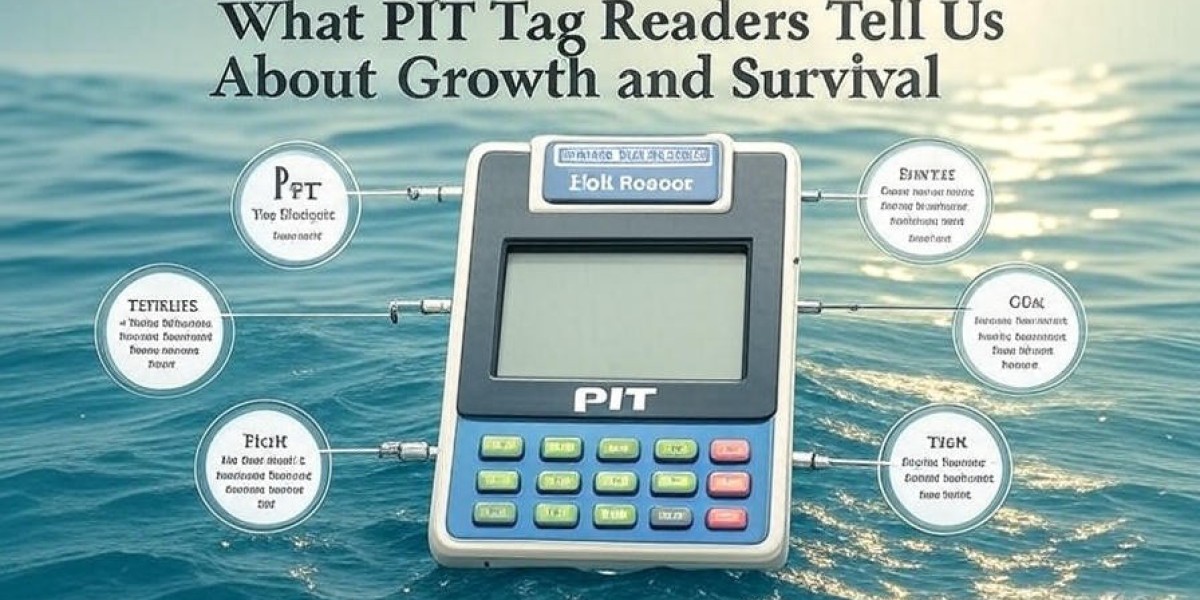A Fish's Life Story: What PIT Tag Readers Tell Us About Growth and Survival
The Unseen Narrators of the River: Unlocking Fish Data with PIT Tags
In the world of aquatic research, understanding the life of a single fish—its growth, its migrations, its survival through various life stages—can be a monumental challenge. Traditional methods like fin clipping or external tags provide snapshots, but they often lack the continuous, long-term data needed to truly tell a fish's life story. However, a revolutionary technology has quietly become a game-changer: PIT tags, and the specialized readers that make them work. A pit tag reader helps to detect and read a tiny, passive integrated transponder (PIT) tag, which is surgically implanted in a fish. This seemingly simple process allows researchers to gather an incredible wealth of data without ever having to recapture the same fish by hand.
PIT stands for Passive Integrated Transponder. These are tiny, glass-encapsulated microchips, often no bigger than a grain of rice, that contain a unique identification number. Unlike active tags that require a battery and broadcast a signal, PIT tags are passive. They lie dormant inside the fish until they come within the range of an energizing field. This is where the pit tag reader comes into play. The reader emits a low-frequency radio signal, which provides the energy needed to "wake up" the tag. The tag's microchip then uses this energy to transmit its unique ID back to the reader. This entire process happens in milliseconds, and the data is instantly logged, creating a precise, non-invasive record of that fish's presence.
This technology has transformed fisheries science, enabling researchers to collect continuous, long-term data on fish populations. It is a powerful tool for understanding growth rates, survival probabilities, and the success of conservation efforts. The beauty of the system lies in its simplicity and durability. Once implanted, a PIT tag can last for the entire life of the fish, providing a permanent, unique identifier that can be read over and over again without harm.
From Hatchery to Ocean: Tracking a Fish’s Journey
The real power of a pit tag reader is revealed when it's integrated into a network of detection sites. This allows scientists to track a fish's journey from a hatchery release point to its spawning grounds, and everywhere in between.
The Hatchery Phase: Birth of a Data Point
The story begins at a fish hatchery, where thousands of juvenile fish are reared. Before they are released into the wild, a small number of fish are selected for tagging. Using a specialized injector, a tiny PIT tag is implanted just under the skin or into the body cavity. This procedure is quick and has been shown to have minimal impact on the fish's health and survival. The tag's unique ID is logged along with the fish's physical data, such as its length and weight at the time of tagging. This initial data point is the first chapter in the fish's life story.
The Downstream Migration: Navigating the River
As the juvenile fish (often called smolts, for species like salmon) begin their downstream migration towards the ocean, they pass through a series of checkpoints. These checkpoints are often equipped with stationary antennae—large loops or panels placed in a river channel, fish ladder, or culvert. As a fish with a PIT tag swims through the antenna's magnetic field, the antenna acts as a pit tag reader, capturing the tag's ID. This data is automatically recorded, along with the date and time. This provides crucial information on the timing of migration, which can be influenced by environmental factors like water temperature and flow.
The Ocean Phase: The Great Unknown
Once the fish reaches the ocean, tracking becomes more difficult due to the vastness of the environment. However, PIT tags are still incredibly useful. When the fish returns to its natal river to spawn, it will pass through the same network of antennas. The pit tag reader at a fish ladder, for example, will detect the returning adult fish. By comparing the date of its return with its initial tagging date, researchers can determine its age and survival rate. This is particularly valuable for long-lived species, providing data that would be nearly impossible to gather with traditional methods.
The Spawning Grounds: The Final Chapter
For some species, PIT tags can even be used on the spawning grounds. Researchers might use a handheld pit tag reader to scan individual fish in shallow water or use portable antennae to monitor entire spawning beds. This can help confirm that the fish has successfully returned to its birthplace, a key metric for evaluating the success of conservation and habitat restoration projects.
The Story in the Data: What We Learn About Growth and Survival
The real value of a pit tag reader is not just in detecting a fish's presence, but in the cumulative data it collects over time. By combining the data from multiple detection events, researchers can piece together a detailed narrative of a fish's life.
1. Growth Rates: A Window into Health and Habitat
Every time a tagged fish is detected by a pit tag reader, researchers can, in some cases, capture it to measure its length and weight again. This repeated measurement allows them to calculate precise growth rates. For example, a study on juvenile Chinook salmon in the Columbia River system used PIT tags to track thousands of fish. By comparing the growth rates of fish that migrated through different parts of the river—some with restored habitats, others without—researchers could demonstrate the direct impact of habitat quality on fish growth. Slower growth rates can be an indicator of poor food availability, disease, or stressful environmental conditions. This data is invaluable for prioritizing conservation efforts and identifying areas in need of restoration.
2. Survival Probabilities: Assessing Conservation Success
Perhaps the most critical information provided by a pit tag reader is data on survival. By tagging a large cohort of fish and monitoring them over time, scientists can calculate survival probabilities at various life stages. For example, they can determine what percentage of fish survive the migration from a hatchery to the ocean, what percentage survive their time in the ocean, and what percentage successfully return to spawn. This data is essential for assessing the effectiveness of management strategies. If a particular hatchery’s fish show a higher survival rate, researchers can study their practices to replicate the success elsewhere. If survival plummets after a fish passes a certain dam or polluted area, it highlights a problem that needs to be addressed. The long-term, multi-year data provided by a pit tag reader network is the backbone of these complex survival analyses.
3. Behavior and Migration Patterns: Uncovering the Unknown
The continuous data from PIT tag detection arrays reveals intricate details about fish behavior and migration that would otherwise be impossible to observe. Researchers can see how long a fish lingers in a certain area, what routes it takes, and how it responds to changes in water flow or temperature. This has led to remarkable discoveries, such as the fact that some fish species, previously thought to migrate directly to the ocean, spend significant time in freshwater estuaries, using them as important rearing grounds. This knowledge is crucial for conservation, as it ensures that these critical habitats are protected.
The Future of Fish Tracking: Beyond the Present
The success of PIT tagging has paved the way for even more advanced technologies. Researchers are now exploring ways to combine PIT tags with other sensor technologies. For example, a PIT tag could be integrated with a micro-sensor that records temperature or depth, providing an even richer dataset upon detection.
Furthermore, the scale of PIT tag research is growing. Projects like the Integrated Status and Trend Monitoring (ISTM) Program in the Pacific Northwest have created vast, coordinated networks of readers spanning entire river basins. This collaborative approach allows for the collection of data on a truly epic scale, providing a holistic view of fish populations across multiple jurisdictions.
In conclusion, the simple, passive nature of a PIT tag, combined with the power of the pit tag reader, has revolutionized fisheries research. It has transformed the study of fish from a series of disjointed observations into a compelling, data-rich narrative. From a tiny juvenile leaving a hatchery to a massive adult returning to spawn, every detection is a chapter in a fish's life story. It is a story of survival, of growth, and of resilience, told by an invisible network of technology that is helping us to better understand and protect our invaluable aquatic resources. The next time you see a stream, imagine the hidden stories waiting to be told, one tiny tag at a time.








